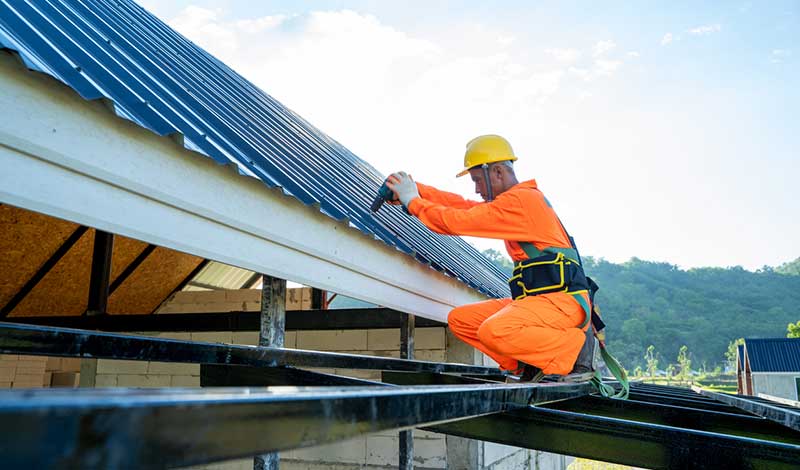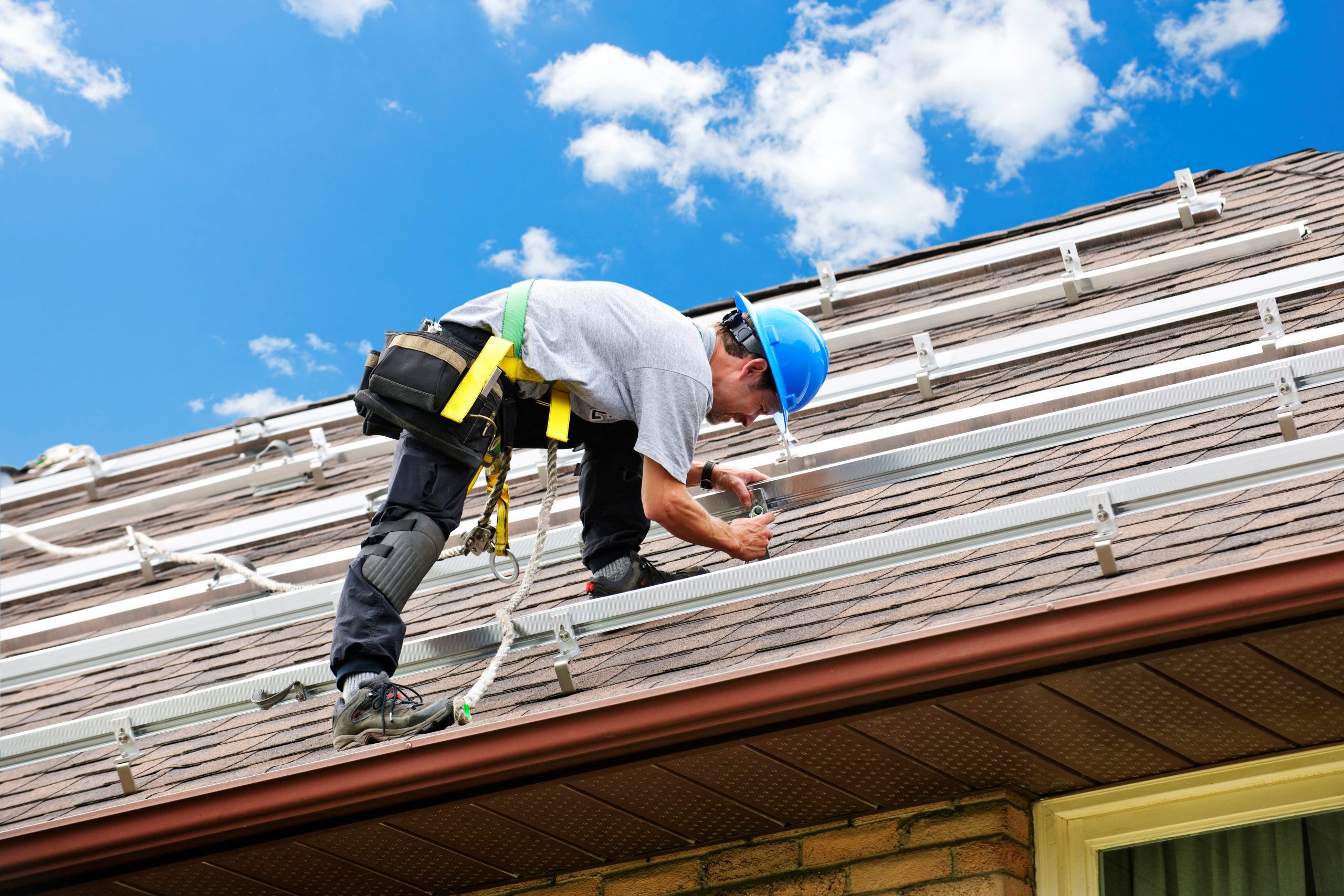A Comprehensive Guide to Effective Roof Flat Roofing System Setup
The complexities of flat roof installation demand a meticulous strategy, starting with a detailed understanding of different flat roofing system types and the essential materials required for optimum efficiency. A successful installation hinges not just on the option of materials but likewise on the preparation and implementation of each step included in the process. As we explore the crucial stages from prep work to upkeep, it comes to be obvious that neglecting even minor details can dramatically affect the roofing system's longevity and effectiveness. What details methods can ensure a smooth setup that endures the test of time?
Recognizing Flat Roof Covering Types
When taking into consideration level roofing systems, it is important to recognize the numerous types available, as each offers distinctive advantages and disadvantages tailored to particular demands. The most common types of flat roofings consist of Built-Up Roof (BUR), Changed Asphalt, and Single-Ply membrane layers.
Built-Up Roof contains several layers of asphalt and crushed rock, giving excellent toughness and climate resistance. It is specifically beneficial in areas susceptible to serious climate condition however may call for even more maintenance because of its complicated building and construction.
Modified Bitumen is a popular choice for its convenience of installation and flexibility. It typically employs a self-adhesive or torch-applied technique, which can be helpful for fast repair work and long-term efficiency. Its life expectancy can be shorter compared to BUR.
Single-Ply membranes, consisting of Thermoplastic Olefin (TPO) and Ethylene Propylene Diene Monomer (EPDM), are identified for their light-weight nature and power efficiency. These materials are frequently chosen for industrial buildings as a result of their cost-effectiveness and simplicity of installation (Cleveland Roofing Specialists). They may not supply the exact same degree of insulation as other options.
Each roof covering type requires cautious consideration based upon climate, budget plan, and details job requirements.
Essential Products for Flat Roof Covering
A range of essential products are important for the effective setup of level roof. The selection of materials straight influences longevity, efficiency, and overall effectiveness.
Among the main materials is the roof covering membrane, which can be built from numerous compounds such as polycarbonate polyolefin (TPO), ethylene propylene diene monomer (EPDM), or PVC. Each type uses unique advantages, including UV resistance and versatility, which are essential for prolonged performance.
In enhancement to the membrane, insulation materials play a substantial role in energy performance. Rigid foam boards or polyisocyanurate insulation are prominent options, as they provide excellent thermal resistance and dampness management.
Additionally, roof adhesives and sealers are essential for making sure a water tight installation. These products should be suitable with the selected membrane layer to stop wear and tear gradually.
Preparing for Installation
Appropriate preparation is vital for a successful flat roofing setup, as it lays the groundwork for a durable and effective roof covering system. Begin by performing a complete assessment of the existing roofing framework.
Next, collect all needed tools and products, guaranteeing that they meet sector criteria. This includes waterproof membrane layers, insulation, blinking, and fasteners. Acquaint yourself with the producer's specifications, as adherence to these standards is essential for warranty objectives.
Consider weather condition problems; stay clear of installation during heavy rainfall or severe temperature levels, which can impact material efficiency. By taking these primary actions, you can improve the chance of a successful flat roofing installment that fulfills both aesthetic and Check Out Your URL architectural requirements.
Step-by-Step Installation Process
With the groundwork established via detailed prep work, the next phase entails performing the flat roofing system setup systematically. Begin by making sure that the architectural deck is tidy and free from particles. Next off, mount a vapor obstacle to stop dampness accumulation below the roofing material. This action is crucial for preserving the roofing system's integrity in time.
Following the vapor obstacle installation, lay down insulation boards, guaranteeing they fit firmly with each other to reduce thermal linking. Protect the insulation with appropriate bolts based on the roofing system kind and local structure codes - Cleveland Roofing Specialists.
Make sure proper overlap at edges and joints to produce a leak-proof seal. Use adhesives, mechanical bolts, or heat welding as needed. Finally, set up blinking around perimeters, vents, and any type of roofing system infiltrations to enhance waterproofing. After setup, perform a thorough assessment to identify any prospective problems before concluding the task, making certain a trustworthy and durable Clicking Here level roof system.
Maintenance Tips for Longevity
Regular maintenance is necessary to make certain the longevity and efficiency of a level roof covering. Among the primary tasks is to conduct regular examinations at the very least twice a year, ideally in springtime and loss. Throughout these assessments, seek indications of wear, such as sores, fractures, or pooling water, which can show underlying concerns.

Making sure correct drainage is essential to protect against water accumulation. Inspect and clear seamless gutters, downspouts, and scuppers to assure unhampered water flow. Furthermore, check seals around vents, skylights, and various other penetrations for any kind of signs of degeneration, using caulk or sealer as required to keep a leak-proof obstacle.
Last but not least, consider professional maintenance solutions every couple of years for comprehensive evaluations and repair services. By sticking to these maintenance ideas, you can dramatically expand the life of your level roof covering, guaranteeing it stays a trustworthy guard versus the aspects.
Final Thought
Reliable flat roof installation demands an organized strategy including complete assessments, material selection, and meticulous prep work. Following the described steps throughout the installment process makes certain the correct application of roof covering membrane layers and insulation while enhancing waterproofing with reliable blinking setup. Implementing regular maintenance practices significantly adds to the durability of the roofing system. By adhering to these guidelines, a reliable and sturdy flat roof covering solution can be attained, with the ability of withstanding numerous environmental problems.
The details of level roofing system installment need a precise technique, starting with a thorough understanding of different level roof covering types and the vital materials needed for optimum performance.Proper preparation is necessary for an effective level roof setup, as it lays the groundwork for a effective and resilient roof system. After setup, perform a thorough assessment to determine any kind of possible concerns before wrapping up the job, making certain a dependable and durable flat roof system.
